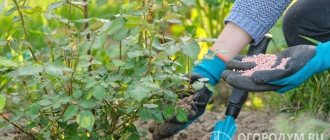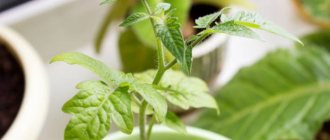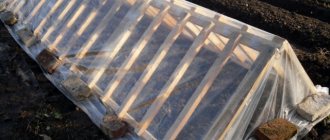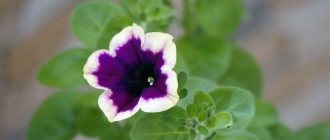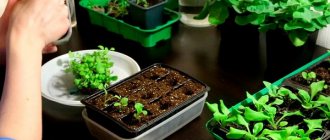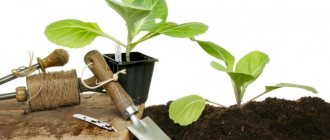- Video
The question of how to feed petunia for abundant flowering naturally arises from domestic amateur gardeners. In the weather and climatic conditions of many regions of Russia, this heat-loving perennial plant is grown as an annual crop. For intensively and long-blooming annuals, fertilizing is vital because it helps ensure maximum results within one season.
Petunias (pictured) are luxurious ornamental plants that bloom throughout the warm season in open flower beds, verandas and balconies.
A guarantee of lush and long flowering is not only knowledge of the characteristics of these plants, their types and varieties, but also compliance with the rules of cultivation and care at home or in the garden. To grow a beautiful, fragrant flower garden, you should not neglect simple and clear truths: petunias require sufficient watering, periodic removal of dead flowers and regular feeding.
Today we will tell you in detail what fertilizers should consist of, what they are and what is the meaning of their use at all stages of the plant’s life cycle.
Rules for applying fertilizers
Petunias are very responsive to fertilization, but the gardener needs to follow the golden rule of fertilizing this crop - it is better to underfeed the seedlings than to overfeed them. Excess nutrients and improperly applied fertilizers can destroy seedlings. When applying this or that fertilizer, you should observe the reaction of the flowers - if the petunia liked the feeding, it will respond with vigorous growth.
Petunia seedlings can be fed by watering the soil under the root of the seedlings with nutrient solutions. Do this only on damp soil immediately after watering. The flower should be well watered at least an hour before applying fertilizer.
The peculiarity of petunias is that they better absorb nutrients in liquid form. Therefore, it is advisable to prepare liquid fertilizers in the form of solutions. Scattering granules will not give the same effect as watering a flower with a solution.
This flower crop must be fed throughout the growing season. But long-term fertilizers are applied only once. Petunias are fertilized with liquid fertilizers every week.
It is recommended to alternate foliar feeding and root feeding. In this case, the plant is sprayed over the leaf with a weaker solution.
Flower diseases
The fight against fungal diseases begins at the seed stage. Those that were collected from domestic plants are treated with a solution of succinic acid before sowing or potassium permanganate. Sand for soil is calcined, and the soil is watered with a solution of potassium permanganate.
A common disease is “black leg”. This is a fungus that multiplies with heavy watering and poor soil ventilation. All seedlings may die. For treatment, alkalization is used - feeding with chalk, lime, dolomite flour.
Mandatory feeding for petunia
If you learn how to properly fertilize petunia and know exactly what to feed these flowers with, you can achieve long and colorful flowering. So, petunia is fertilized with potassium monophosphate so that the buds have a brighter color.
The first thing a grower needs to consider is what important minerals and trace elements the crop needs.
The first feeding for petunia is applied by spraying the leaves two weeks after the sprouts emerge. To do this, seedlings are shed with a weak solution of manganese or fungicides. It is necessary to spray the plants so that the solution gets on the stems and leaves, as well as on the ground.
The soil in the box with seedlings should be kept moist at all times. But petunia should not be over-watered, as excessive dampness can cause root rot.
Petunia seedlings will grow very well if you regularly fertilize them with mineral mixtures. Typically, fertilizing with mineral supplements is carried out between watering the plants. It is enough to add minerals once every two weeks.
Timely watering
Abundant and long flowering of petunia cannot be achieved only with the help of fertilizing. The key to success is watering. The best time for it is early morning or late evening. The most suitable water is melt or rain water, or at least settled water.
Important! Water the petunia with acidified water. Or plant it in acidic soil.
The water shouldn't be icy, but it shouldn't be too warm either. It is best if it is slightly warmer than the soil. It is not advisable for streams of water not to fall on the flowers; try to water right under the roots.
On hot summer days, water your petunia in the morning and evening. It can easily tolerate heavy watering, but can die from stagnation of water. Try to keep the soil under the plant moist and not too dry. Although petunia is a drought-resistant flower, there is no need to tempt fate: if possible, water regularly, but little by little.
Vitamins for petunias
Lush, abundant flowering can be achieved by adding vitamin complexes to the plants. Feeding petunia with vitamins is usually done after picking. When real leaves appear on the seedlings, they are planted in separate pots.
An excellent remedy that can be used to feed petunia after transplantation is a solution of yellow crystallon. 1 tbsp. l. The substances are diluted in 10 liters of water and the seedlings are shed. Crystallon promotes the formation of a powerful root system and rapid growth of seedlings.
You can also use a solution of green crystallon if the seedlings grow very poorly and look pale. This substance is used for foliar feeding. The solution is sprayed onto the leaves and stems. After this treatment, the seedlings will begin to grow much better.
Instead of crystallon, you can use the following nutritional compositions:
- "Uniflor Micro";
- B vitamins, especially B12;
- thiamine
If you need to grow a lot of seedlings, it is better to purchase complex fertilizer in a large package.
The use of B vitamins to fertilize seedlings and already mature petunia bushes gives excellent results. This plant is very “voracious” during the budding period, so the seedlings should be sprayed every 10 days with B vitamins, which can be bought at the pharmacy. It is recommended to dilute the contents of 1 ampoule with water in a ratio of 1:10 and spray the stems and foliage.
Possible mistakes
The main mistake made by beginning gardeners is failure to follow the rules for preparing solutions. Exceeding the recommended concentration can lead to disease and death of plants.
Long-term use of nitrogen fertilizers will lead to the growth of green mass, but will “extinguish” flowering.
Substances containing chlorine are harmful to petunias.
Planting in the ground is carried out in early June, fertilizing begins 1-2 weeks later.
It is recommended to feed hanging plants daily with a weak solution, since weekly application of a concentrated product has a detrimental effect on the root system and will lead to the death of the flowers.
How and what kind of fertilizing to apply
The peculiarity of applying fertilizers to petunia is that over time, as the seedlings grow, fertilizing is applied more and more often, bringing the frequency of applications to three times a week. As soon as real leaves appear on the sprouts, you need to spray them with a nutrient solution.
For these purposes you can use:
- urea;
- crystallon;
- "Floral aquarium".
An excellent fertilizer for petunias is “Veriohumus”. During the growth of seedlings, vitamin solutions are added to them at the root.
When the sprouts become stronger and begin to grow, they begin to be fertilized with calcium nitrate, urea or potassium. These fertilizers are dissolved in water at the rate of 10 g per 10 liters. After applying these fertilizers, the stems of the seedlings immediately become plump.
When petunia seedlings begin to bloom, they begin to apply foliar fertilizers along with root fertilizers. Petunia is carefully sprayed with nutritional compounds, trying to soak the back side of the leaves.
Many gardeners do it easier - they buy complex fertilizers for garden flowers in gardening stores. But you cannot apply purchased fertilizers to flowers without a schedule. Each type of fertilizer is applied at a certain point in the growing season of the plant.
Reviews from flower growers
Alexandra, 22 years old, Astrakhan
In a country flower bed I grow a variety of petunia with creeping flexible shoots and gorgeous snow-white “gramophones”. Our soil is good and fertile. So I practically don’t use fertilizers during the season. In the spring, before planting, I add rotted manure, and then, when possible, I water it with an infusion of ash. I did not encounter any special problems in care. The plants feel great, look simply charming, the flowers are hardy even to prolonged rainfall.
Svetlana, 28 years old, Matveev Kurgan
I prefer to grow low-growing, large-flowered varieties because of their dense tillering and good branching. At the growth stage, so that the shoots do not stick out chaotically, I pinch the tops and give the bushes a neat ball shape. I use a universal substrate: equal parts humus, leaf soil and a halved share of sand. I feed young shoots once a week with nettle infusion (1 liter of infusion per bucket of water), I consider it the most useful source of nitrogen for delicate ornamental crops.
Asya, 42 years old, village. Alexandria
It is much more profitable to buy ready-made plants in cups. I keep them indoors while it's cold outside. After two weeks I transplant them into hanging pots and immediately start feeding them. The main thing is not to forget to do this regularly, otherwise the petunia will not receive the necessary elements. When adding fertilizer to water for irrigation, I use half the dosage specified by the manufacturer. I noticed that at the stage of the appearance of the first buds, the plants respond gratefully to potassium-phosphorus fertilizers and then show vigorous flowering.
Folk remedies
At significantly lower costs, you can fertilize petunia using folk remedies, which are as effective as expensive fertilizers. First you should look in the first aid kit. For example, hydrogen peroxide is an excellent remedy that improves the growth of seedlings and stimulates lush flowering of petunia. 40 ml of peroxide is dissolved in a bucket of water and added to the plants at the root.
Also, potassium permanganate and boric acid make petunias bloom magnificently and colorfully. At the same time, these cheap drugs repel pests.
Fertilizing gives good results:
- baker's yeast;
- eggshell;
- wood ash.
Experienced gardeners and vegetable gardeners use regular baker's yeast as a top dressing when growing flowers and vegetables. Even a depleted area can be turned into fertile if you treat the soil with a yeast solution.
Yeast fertilizer for petunia is prepared as follows:
- 100 g of live yeast are dissolved in 10 liters of warm water.
- Then add 1 tbsp to the solution. l. Sahara.
- After two days, the infusion is diluted with clean water 1:5.
- For each plant you need to use about 500 ml of fertilizer.
- Feed petunia with yeast every two weeks.
At home, to ensure that the seedlings are strong and grow quickly, they can be fertilized with banana peels. An infusion of banana peels is prepared in water. The crusts should sit for about a day. Then the infusion is diluted in half with clean water and the seedlings are added once every two weeks.
You can also speed up the growth of petunia by fertilizing it with manure in the form of a solution. To feed the sprouts, you need to pour 1 part of manure with 10 parts of water and leave in a warm place for a week. Then the infusion is filtered, 1 tsp is added to it. potassium permanganate and vitriol. This solution is added to the bushes, having previously diluted it 1:10 with water.
Fertilizers for abundant flowering
In order for the bushes to be in bloom, before the formation of buds and during budding, it is necessary to fertilize the petunia. Spraying with a 1% boron solution, which stimulates flowering, is very useful.
Root fertilizers, which can be bought ready-made in stores, are also applied every 10 days.
So, they have proven themselves well:
- "Crystalline pink";
- "Planton";
- "Aquamarine".
The drugs are diluted according to the instructions. You can also spray the bushes with the same products, reducing the recommended dose of fertilizer by half.
At the same time, “Crystallon” makes flowering last longer, and “Aquamarine” makes the color of the petals brighter and more saturated.
Many experienced gardeners advise alternating the application of potassium monophosphate and potassium nitrate. You can also feed flowers with Fertika throughout the season to enhance and prolong flowering. Feeding is especially necessary if petunia is grown in boxes on a window or balcony.
Judging by the reviews of flower growers, the Kemira Lux fertilizer performed very well. During the flowering period, this product is simply irreplaceable for petunia.
“Kemira” has a well-balanced content:
- nitrogen;
- phosphorus;
- potassium
The drug "Agricola" has a similar composition.
To achieve large flowers, petunia must be sprayed leaf by leaf with Epin or Zircon. These drugs are diluted with water in a ratio of 1:15. Spray flowers only once a week.
Table: Signs of Deficiency of Certain Nutrients
| Name of substance | Signs of shortage |
| Iron | Petunia leaves turn yellowish, but their veins remain green |
| Nitrogen and boron | The plant lags behind in development, its leaves begin to curl |
| Phosphorus and potassium | Flowering is sparse and flowers are pale |
| Manganese | The leaves of the plant turn pale green |
Common problems
A very common problem is frail, stunted petunia seedlings and yellowing leaves. If the seedlings are very weak, they should be fed with nitrogen, which stimulates the plant to grow green mass.
Yellowing of foliage is often caused by a lack of iron in the soil. In this case, the plants need to be treated with the drug “Ferovit”.
Such treatments are carried out three times, with an interval of 8 days.
Petunias bloom very colorfully and luxuriantly if you feed them properly with fertilizers. Regular spraying and watering at the roots will help to grow beautiful flowers that will delight you with continuous flowering until autumn.
How to feed petunia during transplantation, after planting in the ground: advice from gardeners
- When planting, there is no need to apply fertilizers, since all the necessary substances are contained in the soil used for planting the plant. Petunia needs to be fed a few weeks after planting in its permanent place. It is better to use nitrogen fertilizers, as they help increase leaf mass. The ideal option is urea or ammonium nitrate.
Seedling
- The first shoots appear 10-14 days after planting. Before applying fertilizers, you need to loosen the soil so that the substances penetrate better into the root system. It is better to use a complex of mineral fertilizers. Experienced gardeners recommend using Plantafol, Master or Ideal . You can also use “Carbamide”, “Biohumus” and “Aquarin”.
